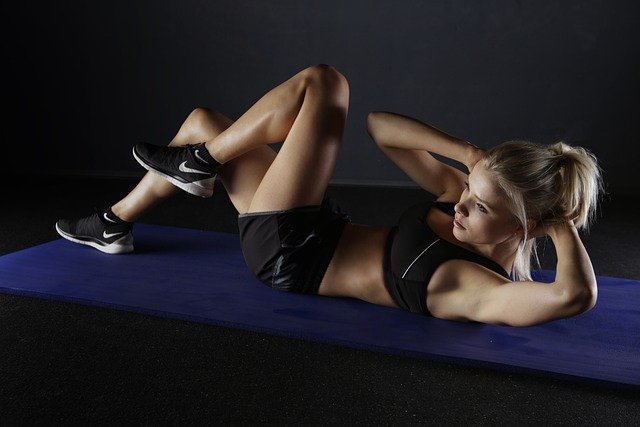
If you’ve ever followed a workout video, especially something high-energy like T25 with Shaun T, you’ve definitely heard the phrase: “Use your core!”
And if you’re like most people, you’ve probably thought: “Okay…but how do I do that? And what does it even mean?”
Is it the same as sucking in your stomach? Flexing your abs? Should you be doing it the whole time? Is it even important if you’re just walking?
Speed 2.0 in T25 is one of my favorite workouts, and I can’t tell you the number of times Shaun T talks about making sure you’re using your core. After a while, I wondered if I was doing it right…and when exactly I should be using it. Just when I’m doing T25? When I’m doing any exercises? When I’m walking? All the time? I had no idea. So I figured it was time to look into it.
Let’s break it all down in a way that makes sense…so you can get stronger, move better, and avoid injury, no matter how often you work out.
First: What Is Your Core, Really?
Your core is more than just your abs. It’s a group of muscles in your midsection that support your spine and pelvis and connect your upper and lower body.
It includes:
- Your rectus abdominis (the “6-pack” muscles)
- The transverse abdominis (deep core muscles that wrap around like a corset)
- Obliques (side muscles)
- Lower back muscles
- Pelvic floor and diaphragm
- Even your glutes and hip muscles help stabilize your core!
So when people say “engage your core,” they’re not just talking about flexing your abs. They’re talking about activating this entire support system in a controlled way.
What Does “Engaging Your Core” Mean?
Engaging your core means gently activating those deep muscles to stabilize your body – especially your spine – before and during movement.
It’s not about sucking in your stomach or holding your breath. It’s more like bracing yourself for a light punch to the gut. Your belly stays pulled in (but not sucked in), your posture improves, and everything feels more controlled.
A Simple Way to Feel It:
- Stand up tall.
- Take a deep breath in, then exhale.
- As you exhale, gently pull your belly button toward your spine (without rounding your back or holding your breath).
- You should feel your midsection tighten slightly. That’s engaging your core!
It’s a gentle, intentional tightening, not a full-on flex.
Why Should You Engage Your Core?
Engaging your core helps you:
- Improve balance and posture
- Protect your lower back during exercise (and everyday movement)
- Lift heavier or move with more control in workouts
- Prevent injury: especially in high-impact moves like jumps or planks
- Make your workouts more effective by involving the right muscles
It’s not just a fitness buzzword. It actually helps your body move better and safer.
When Should You Engage Your Core?
Great question. You don’t need to walk around with your core locked on all day. But there are certain times when it’s helpful (and smart!) to engage it:
During Workouts
Engage your core when working out, especially when doing:
- Planks
- Squats
- Push-ups
- Lunges
- Cardio moves (like in T25!)
- Lifting weights
- Even stretching (like yoga or Pilates)
- Any time you’re moving your body and want stability or control, your core should be lightly engaged.
During Everyday Movements
- Picking something up
- Reaching for something high
- Sitting down or standing up
- Carrying groceries
- Even getting out of bed
Engaging your core helps protect your spine and makes these movements smoother and safer.
While Walking (But Gently)
Should you engage your core while walking? Yes…but gently. You don’t need to “brace” like you’re about to do a plank, but lightly drawing in your core helps improve posture, reduces stress on your lower back, and can even make your walk more effective.
Will It Hurt You to Engage Your Core?
Not if you do it correctly. But:
- Don’t hold your breath (this can raise your blood pressure)
- Don’t tense too hard (you’re not trying to body-build your abs all day)
- Don’t confuse it with sucking in – that can actually make it harder to breathe and weaken your pelvic floor over time
Instead, aim for that gentle brace feeling. It should support you, not strain you.
A Few Quick Tips to Make It Easier
- Breathe normally while engaging. This is key!
- Practice when standing still, like brushing your teeth or waiting in line
- Use cues like “zip up your abs” or “tighten like someone’s about to tap your belly”
- Check your posture: stand tall, shoulders relaxed, spine neutral
The more you practice, the more it becomes automatic.
Final Thoughts
“Engage your core” doesn’t have to be a mystery. It’s simply about using your deep core muscles to support your body as you move – during workouts, walks, or everyday life.
Even if you’re just working out a couple times a week (or starting to get back into it), learning to engage your core will help you feel stronger, more balanced, and more in control of your movement.
So the next time you hear Shaun T yell, “USE YOUR CORE!” – you’ll know exactly what to do (and why it matters).


